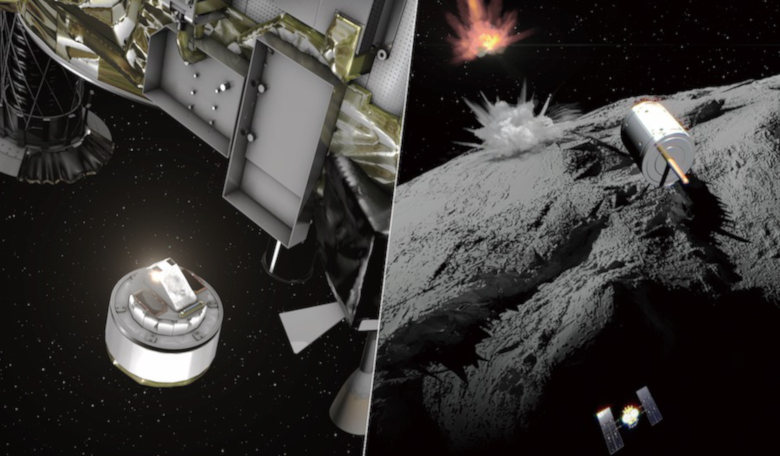Six weeks after firing a bullet at Ryugu’s rugged surface to collect dislodged debris, JAXA’s Hayabusa2 probe has gone one better this time by 'bombing' it with a small softball-sized copper ball.
While the methods might have increased in fire-power, the objective is still the same - to collect material from this ancient building block of the Solar System.
This time however, instead of collecting material that has been subjected to the harsh environment of space over the billions of years this primordial rock has spent wandering the cosmos, Hayabusa-2 will be able to collect freshly unearthed fragments that have never seen the light of day thanks to the explosive device that the spacecraft dropped.
The explosive device, called the Small Carry-on Impactor (SCI), is a 14 kilogram conical container packed with plastic explosive. It was intended to carve out a 10 metre-wide hole in the asteroid after it was fired toward Ryugu’s surface at up to 2 kilometres per second (4,500 miles per hour).
The SCI was one of several deployable modules carried to Ryugu by Hayabusa2, along with the three landers it released last year to explore the asteroid’s surface.
After dropping the impactor, Hayabusa-2 had 40 minutes in which to hide away on the other side of the asteroid to shield itself from any blasted off debris. And debris there was.
Shards of rock ejected from the impact site were caught on camera, but JAXA has said that it will only be able to confirm whether an artificial crater has been successfully created later in April after the probe has manoeuvred back to the site to make extensive observations.
Once at the crater and after the dust and debris has settled, depending on the fallout of the blast, the spacecraft will be able to descend to a lower altitude and collect some of the newly excavated material.
This pristine sample, which could be packed with water and other organic material, will hopefully help scientists understand the formation of the Solar System and how primitive balls of rock such as these, grew to become fully-fledged planets.











